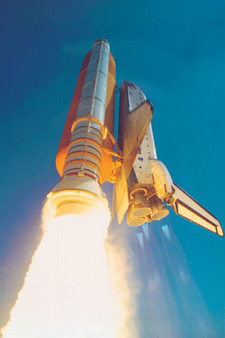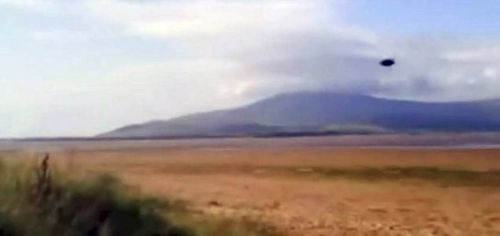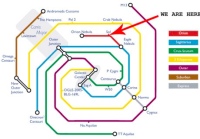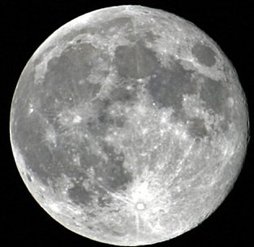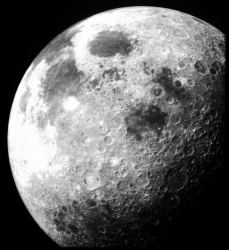MoD : If you See An UFO, Don't Call!
Happy Pluto Discovery Day
Twitpics from Space
There's been a lot of interest in social networking of late, especially because of the emergence of Twitter as a micro-blogging tool. I'm a fan of Twitter, but this is, so far, the coolest use I've seen yet for Twitter, and the Twitter-friendly image sharing service Twitpic. We've been able to follow, sort of, the Mars Orbiter and robots, and various announcements from JPL and NASA, which were all fabulous (and nominated for a Shorty award), but this, this is even better.
Space Shuttle Takeoff from a Commercial Flight
This is a 2007 video, but it's still pretty cool.
Transit Map of the Milky Way Galaxy
Samuel Arbesman, in an effort to diagram and present our galaxy, the Milky Way galaxy in a way that non-scientists could grasp in terms of relationships and space, came up with a nifty graphic tool. He diagramed the Milky Way by using a convention Subway Transit map as a model. It's pretty cool; click here to read more. Click the image for a larger view with information about scale and the color-coding.
The Kepler Mission
A star's habitable zone is the swath of space in which a habitable planet might exist. Earth obviously is square in the middle of Sol's habitable zone. Too far out and you're too cold to easily support life, like the icy Neptune. Too close in and you're molten hot, like Mercury.
The Toddler Universe
Lunar Land, or How Corporations Will Rule Outer Space
When a friend recently directed me to LunarLand.com, a website that supposedly attempts to sell real estate on Earth's moon to terrestrial people in exchange for actual legal tender, I went through a few different stages of analysis and acceptance. At first I was a little offended that something so obviously absurd exists on the Internet and probably profits, then I registered some surprise at how clean and professional the site actually is. I mean, I expect something as silly as Lunar Land to be wrought with misspellings, all-caps text and many a broken table. The fact that it looks like a respectable website is actually a bit startling. At the next stage I came to my senses and assumed that the whole thing is an elaborate joke, a satire of Internet scams and corporate greed. Then I decided to read a little deeper, even into the often overlooked Terms of Service and I came to a bizarre, worrying conclusion: Lunar Land is not only real, it's actually legitimate and kind of ingenious.
A New Year and a Blue Moon
The second full moon
in a single month is a fairly rare occurence, rare enough that it's called a blue moon. A blue moon occurs every 2.7 years because our twelve month calendar doesn't quite match the lunar cycle or the time it takes for the moon to revolve around the Earth. A lunar cycle takes 29 days, 12 hours, and 44 minutes. Roughly. I should note that the moon doesn't, unfortunately, turn even slightly blue, but it's still an additional opportunity to view a full moon.New Year's eve this year is a blue moon; we've already had one on December 2. But it's even more nifty than that. First, while a blue moon occurs about every 2 and a half years, we haven't had one on New Year's Eve since 1990.
